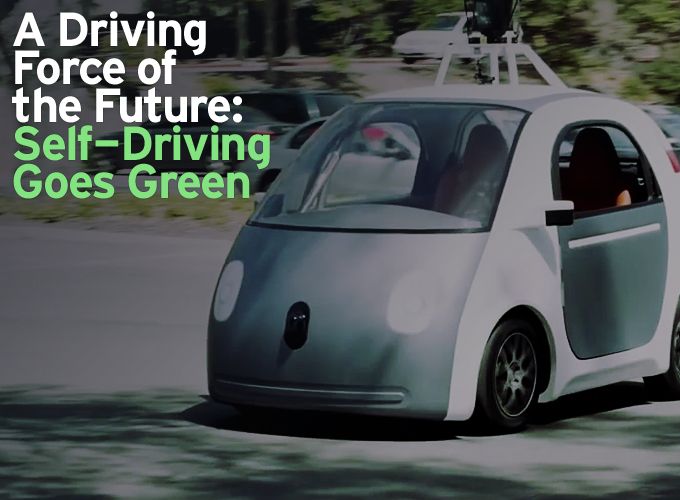With the inevitable progression and inclusion of self-driving cars, we will see an increase of road safety, oil efficiency and reduced greenhouse gas emissions.
Erica Allaby | ROBO-STOX
Advancements in the world of autonomous vehicles are continuing to evolve and strengthen each year. In the next 15 years, we can expect autonomous cars to represent about 25 percent of all passenger vehicles in mature markets, according to a Gartner’s Maverick analysis. From increasing safety measures to economic and environmental efficiency, the future of the autonomous car is looking bright...and green.
The possibilities of self-driving vehicles will merge common methods of transportation with new techniques to get you to your final destination. The world is seeing dramatic temperature swings each coming season, to the extent that the Pentagon has declared global warming a state of emergency. Environmental issues have become impossible to overlook, forcing experts to dig deeper for a cure - a cure that may come in the form of self-driving cars.
In 2013, the National Academy of Science released a nearly 400-page report, Transitions to Alternative Vehicles and Fuels. The report addressed possible changes the United States should make in order to significantly decrease our gasoline consumption by the year 2030. Researchers found that this would be doable largely in part by switching to intelligent vehicles.
Increased safety precautions alone are reason enough for making the switch to autonomous vehicles, seeing as human error is the cause of 90 percent of car-related accidents. However, the environmental benefits are not to be overlooked.
By removing the human driver, the cars are able to adjust and react to traffic flow. Self-driving cars don’t have a lead foot either, helping to stabilize and maintain speed. Many researchers and developers hope to one day create a railway system for the vehicles or autonomous-only lanes on the highway that would allow for a constant flow and efficient form of green transportation.
Self-parking systems can also help to reduce time spent roaming through parking lots by nearly 15 minutes. These systems are already a reality in select Toyota, BMW and Ford models. A computer system would alert the smart cars which parking spaces are open and guide vehicles to the spot.
Connected automated car technologies are also a major player in the field, helping vehicles to communicate. This communication can help to avoid major braking, a cause for car accidents and traffic jams. The Intelligent Transportation Society of America reported that these intelligent transportation systems have the potential to diminish oil consumption and greenhouse gas emissions by 2 to 4 percent each year for the next 10 market-climbing years.
Through the use of connected and autonomous vehicles, emissions can be reduced through more efficient driving. While there is a long road ahead before we see total-transformation of cities and roads, fully accommodating autonomous vehicles will maximize their global impact. With the inevitable progression and inclusion of self-driving cars, we will see an increase of road safety, oil efficiency and reduced greenhouse gas emissions.
About ROBO-STOX LLC
ROBO-STOX LLC is the creator of the first benchmark index to track the global robotics and automation market. Through the expertise of its leadership team and strategic advisors, ROBO-STOX looks worldwide to find new innovations in the robotics space, from companies of all sizes and verticals, to deliver the growth of robotics to investors — from individuals to institutions.
Headquartered in Dallas, Texas, ROBO-STOX is the recognized leader in developing investment solutions and providing investment products that target the robotics, automation and related technology sectors.
The content & opinions in this article are the author’s and do not necessarily represent the views of RoboticsTomorrow
Comments (0)
This post does not have any comments. Be the first to leave a comment below.
Featured Product


